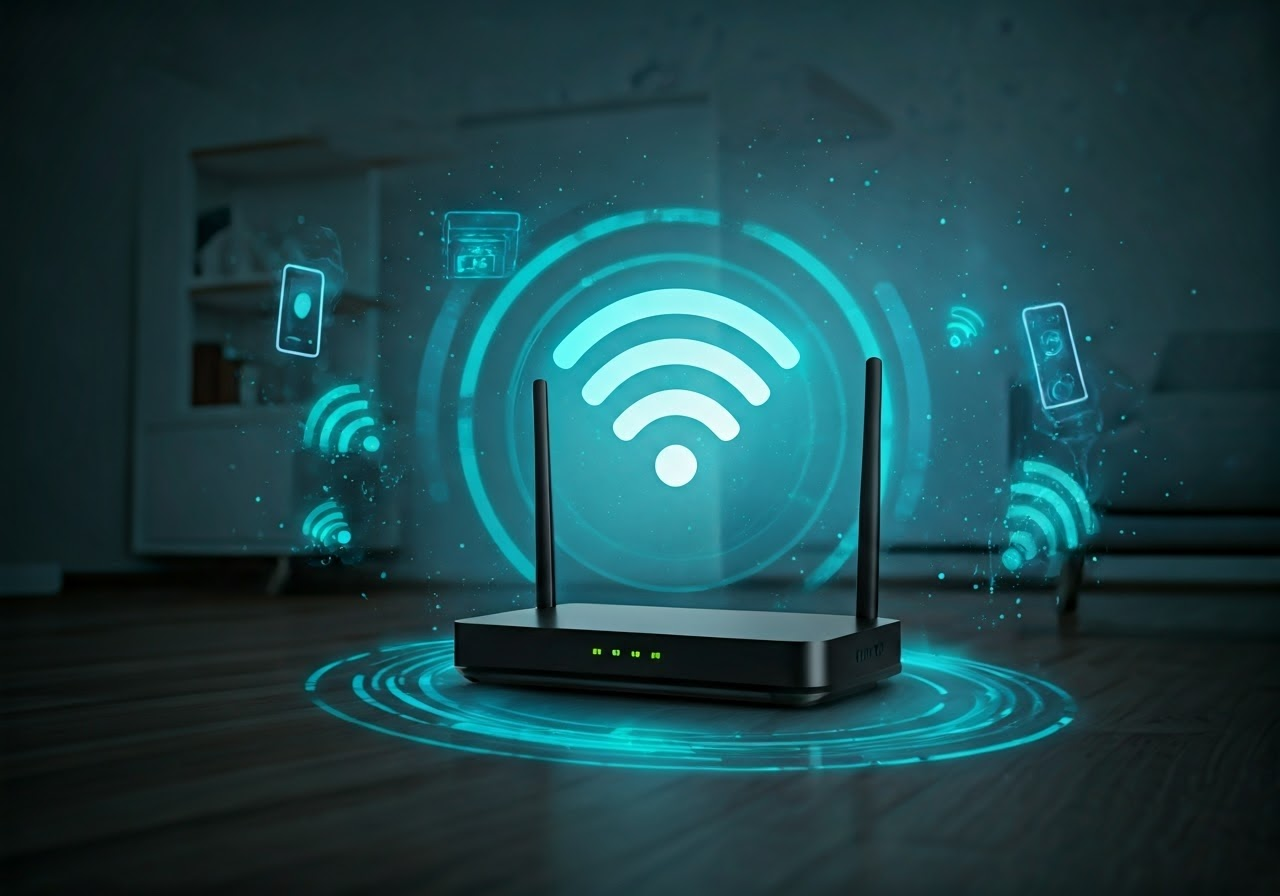WiFi TX Power Explained: Why Max Isn’t Always Best
What is WiFi TX power and why is it important?
WiFi TX power, or transmission power, refers to the strength at which a router transmits signals. It’s crucial because higher TX power can enhance coverage but may also cause interference. Balancing TX power ensures optimal performance, allowing for reliable connections and efficient use of bandwidth in varying environments.

Key Highlights
- Transmit power refers to the strength of the signal that is sent out. A higher level can mean better range, but it can also lead to issues like interference.
- There are many common misconceptions about maximum transmit power and its role in WiFi coverage.
- If you set TX power too high, it can affect connections for IoT devices and mobile technology because they transmit signals differently.
- A very strong signal can cause interference issues, which can reduce network quality and the performance of devices.
- To achieve optimal TX power, you should find a balance between device compatibility, following FCC regulations, and ensuring good signal quality.
Understanding WiFi TX Power
Definition and Importance of TX Power
Transmit power, or output power, is the energy an access point uses to send wireless signals. It is measured in dBm, which means decibel milliwatts. This level of power influences how far the signal can go. It also affects how well the signal can get through barriers like walls.
High transmission power may seem beneficial, but it has drawbacks. A stronger signal can go further. However, excessive TX power can reduce signal quality. This reduction can create interference zones. It’s particularly a problem when many wireless routers or IoT devices are in a small space.
Finding the right TX power level is important to follow the regulatory compliance rules from groups like the FCC. When we stick to these rules, we make our networks safe and dependable. This also allows different devices to connect properly. Rather than just aiming for high output numbers, it is smarter to find a balanced TX power that fits what each device requires. This way, we can get better performance in the long run.
Common Misconceptions About Maximum TX Power
Many people believe that higher TX power means better WiFi connections. But the truth is a bit more complicated. Let’s look at some common misunderstandings:
- Myth: A higher TX power gives full coverage everywhere.
- Truth: A strong signal can increase reach, but some devices with low power may still have trouble connecting.
- Myth: More TX power means quicker internet speeds.
- Truth: The actual internet speed depends more on the signal-to-noise ratio and good channel planning than just on power levels.
- Myth: Turning up TX power fixes dead zones completely.
- Truth: Poor device compatibility can still cause coverage issues, regardless of how high the TX power is.
In real life, too much transmission power can cause problems. It can result in uneven network performance and more interference. It is important to adjust the power based on your specific needs. This helps avoid issues like mismatched coverage and signal failures.
The Impact of High TX Power on Device Connectivity

Setting access points to the highest transmit power usually does not help mobile devices or IoT equipment. These devices often use lower transmission power to save resources, such as battery life. When the power levels differ, it can lead to weak connections.
Using too much TX power can cause signals to become too strong and overlap. This may decrease the quality of the network. Instead of only aiming to extend the reach of your WiFi routers, it’s better to find a balance between coverage, efficiency, and connection quality for different devices.
Challenges for Mobile Devices with Lower Transmission Capabilities
Designing WiFi networks for IoT devices and smartphones has its own difficulties. These devices are small and made to save battery life. Because of this, they use less power to send signals compared to access points designed for strong connections.
This difference can cause problems. An access point can easily reach these devices with its signal. But, the devices do not send back strong signals. This may lead to dropped connections and poor communication. IoT technologies, such as sensors and barcode scanners, feel this impact the most. They have a hard time working well with strong wireless routers.
To solve this issue, you can change the TX power. This can help improve communication. For example, businesses that use IoT systems can maintain strong connections. They can do this by updating the firmware, adjusting antennas, or changing settings on the access point. With these updates, all network devices will receive good coverage without using too much power.
Interference Issues with High TX Power Settings
Too much Texas (TX) power can cause problems with WiFi performance. This is often due to interference. In crowded places, signals can overlap and create noise. This noise can make your connection feel weak and not reliable.
|
Problems Caused By High TX Power |
Resolution Methods |
|---|---|
|
Signals overlap between devices |
Lower TX power to avoid reach issues. |
|
More noise in the wireless spectrum |
Use built-in RF filters like the RFI system found in some models. |
|
Slower device speeds due to extra retransmissions |
Use smart channel choices to prevent overlap. |
To solve these problems, it is important to balance power levels. You can achieve this using tools for wireless network management. Modifying the TX power and using directional antennas can help reduce interference. This will help keep your signal strong.
Conclusion
In conclusion, increasing the WiFi TX power might seem like a good idea for better coverage. However, this can cause connection problems. Too much power from your Access Points can create interference. This interference affects devices that don’t send strong signals, which can slow down your network. A better choice is to adjust the TX power level based on the needs of your devices. By focusing on your weakest device, you can build a strong and efficient network for everyone. If you need help boosting your WiFi setup, contact our experts today.
Frequently Asked Questions
What are the risks of setting WiFi TX Power to maximum?
Setting the maximum TX power can cause several problems. It might lead to network interference. It can create issues with regulatory compliance and cause mismatched coverage. Plus, it may shorten the battery life of mobile and IoT devices. A signal that is too strong can hurt connectivity. This can give a worse user experience instead of making it better.
What factors should I consider when determining the optimal TX power for my WiFi setup?
Think about what your device can do. Look at how you use the GHz band and the kind of antenna you have. You should also think about signal quality, the rules made by regulations, and problems from the environment. By balancing these factors, you can make sure your WiFi setup gives you good coverage that matches your hardware and network needs.
What is the typical Tx Power of a mobile device?
The typical TX power of a mobile device usually ranges from 0 dBm to around 20 dBm. Most smartphones operate in the lower end of this spectrum, typically around 0 dBm to 15 dBm, depending on the device’s capabilities and environmental conditions. This range allows for effective communication without causing excessive interference with nearby devices. When considering your WiFi setup, it’s essential to account for these limitations to achieve the best performance while maintaining a stable connection across all devices.


